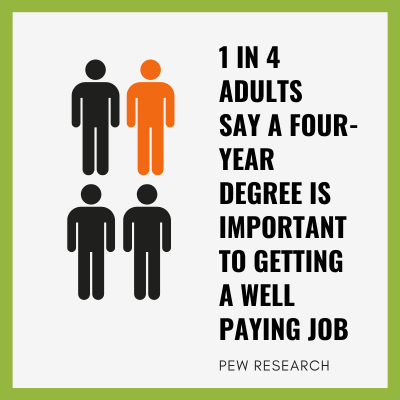By Ece Yildirim and published by CNBC.com
Learning and development programs (L&D) are rising in popularity. But employees and employers aren’t seeing eye-to-eye about their value, and many workers don’t seem happy about it.
Eighty-four percent of employees expect their employer to provide the training and education they need to stay up-to-date with changing skillsets in their industry, according to a recent survey of more than 800 C-suite executives and 800 employees, from online learning platform edX.
In contrast, 51% of the executives surveyed said their companies’ existing L&D programs feel like a “waste of time.”
The gap is also felt in how executives and workers view the quality of these programs. More than half of C-suite executives (65%) said that their employees are “very satisfied” with their company’s L&D programs. Only 32% of employees actually said they’re similarly satisfied.
In other words, employees value their career development and want to utilize L&D programs for it. And they’re willing to look elsewhere if their current bosses fail to provide, edX executive Andy Morgan tells CNBC Make It.
Here’s what you need to know, whether you’re an entry-level employee or a seasoned CEO.W
Workers value L&D programs for their career growth
In the survey, more than three-quarters of employees said they’d stay with their current company long-term if it offered better training and development opportunities.
More than half said they want to develop skills to position themselves for better future opportunities at their current jobs, but 39% said they’d likely leave within the next year for a job that offers better learning programs.
“The notion of getting a four-year degree and advertising that over the rest of your career has long gone by this point, everyone knows they need to rescale and upskill along the way,” says Morgan, head of edX for Business, which develops L&D programs for companies.
“Workers are choosing companies that provide career growth effectively,” he adds. “So, as a senior leader, I think about not just how to reinvest in learning and development to build the skills I need to meet my business objectives, but also how to attract and retain the best talent.”
How current offerings are failing—and what to do instead
The dissatisfaction comes from two things, says Morgan: a lack of investment initiative from executives and a failure to offer effective learning opportunities.
Executives should give employees ample time in their working schedule to take L&D courses, instead of asking them to sacrifice their evenings or weekends, Morgan says. The method of content delivery matters, too.
“The days of throwing an on-demand content library at your employees and hoping that allows them to rescale and allows you to build the business capabilities you need as a leader to survive are over,” says Morgan.
His recommendation: Use a school-like class structure, instead of individual virtual learning modules. Taking classes together can foster accountability and drive discussion, he notes.
“People learn from their teachers, and they learn by going through a program with a cohort of peers at the same time that hold them accountable and allow them to share ideas with each other,” Morgan says. ”[Cohort-based learning] drives a much deeper level of understanding rather than a superficial kind of learning you get from watching a video.”
Read the full article here.


